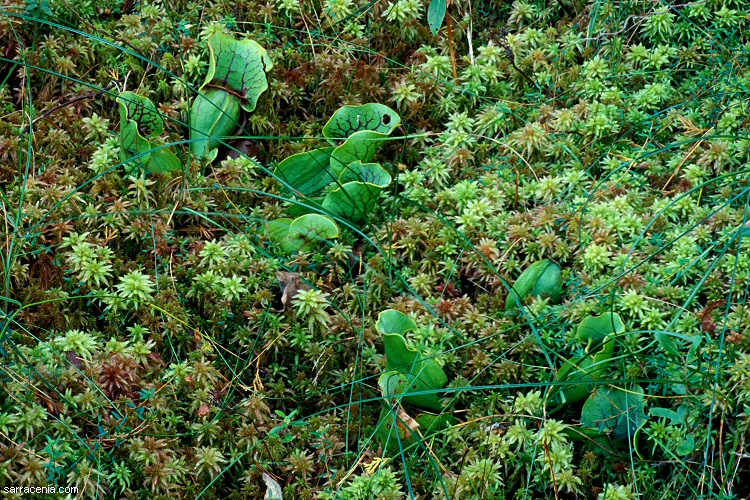
Sarracenia:
While I was taking pictures on the slowly-sinking, drunkenly-tilted platform, Beth looked for more carnivorous plants. It turned out that the
path that we guessed might circumnavigate the pond was actually only a spur trail that travelled perhaps ten meters and rapidly
degraded into oblivion. In fact, I am not sure that the path is really supposed to be there. Since we did not
have permission to go tramping wherever we wanted, we did not explore any further and instead restricted ourselves to
the views from the short path. I longingly looked across the water at pitcher plants and Utricularia just out of our
reach, but we could not in good conscience travel to them. Alas, alas. But the pitcher plants we could get near, like these
at the edge of the
trail, were quite lovely!
Man, I love Sphagnum. That's the moss these plants grow in.
Incidentally, the bog shoreline was home to a very nice population of poison sumac
(Toxicodendron vernix). This plant is closely related to poison oaks and poison ivies
(e.g. T. diversiloba, T. radicans, etc.), but comparing the generous
amount of irritating urushiol on poison sumac
to the urushiol content in those other plants is like comparing habanero chiles to sweet bell peppers. Just another reason to be
respectful of those bogs. There were lots of poison-sumac leaflets-landmines on the ground, too, and they were also
coated with a healthy dose of urushiol. Eesh!